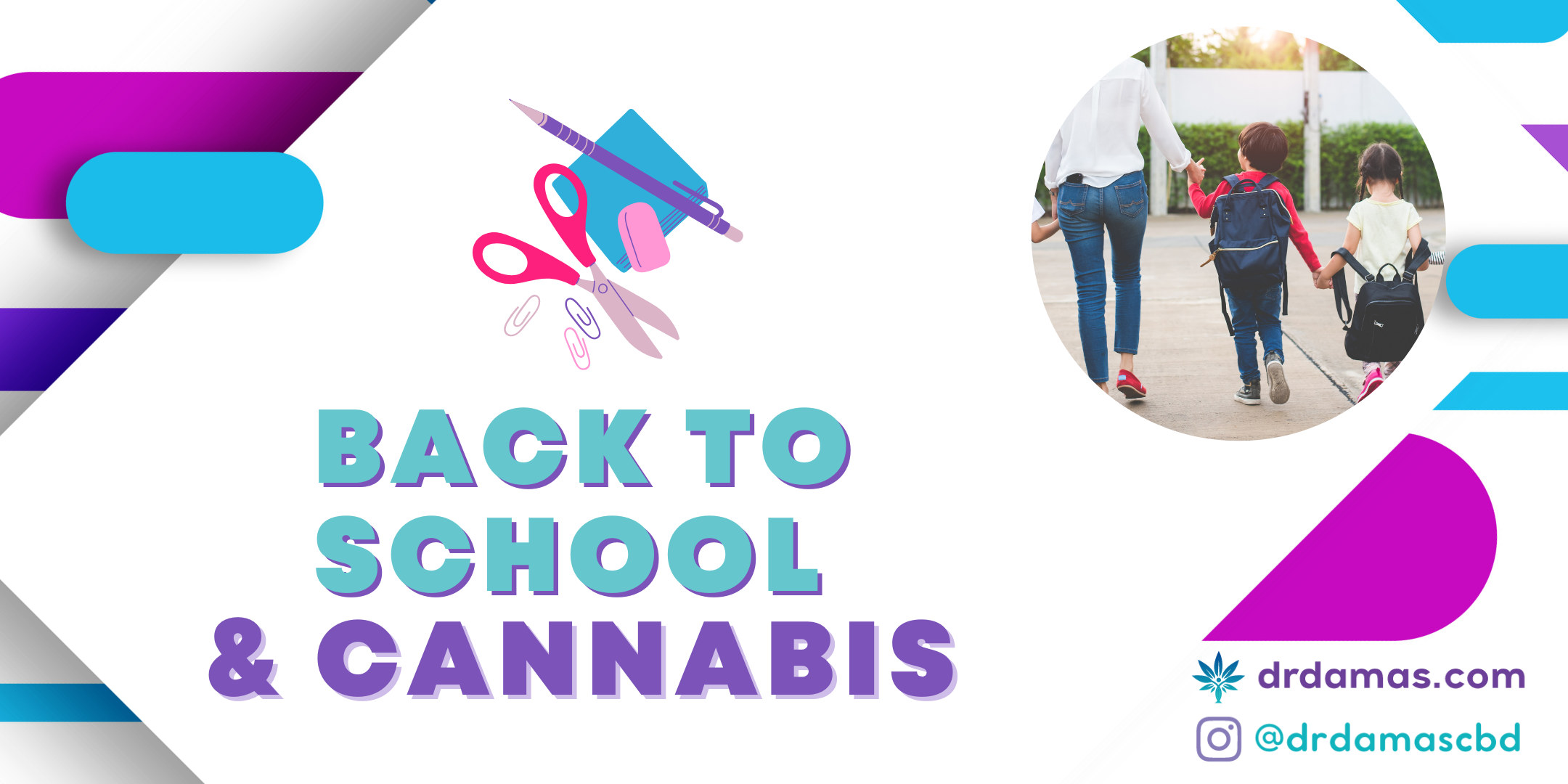Navigating Back-to-School Stress: Here We go Again 😩
Every year, it seems like a week after school lets out, the back to school sales start LOL. If you’re lucky, you get one trip as a family during the summer and then it’s back to the grind as we are here in South Florida. Schools in Broward and Dade counties started this week and despite the “routine” of it, it’s anything but. During this time, families often find themselves dealing with a unique set of stressors. From the financial burden of school supplies to the emotional toll of shifting routines, the transition can be challenging for both parents and children. The changes can have lots of detrimental effects on both mental and physical health and can lead to poor coping mechanisms like substance abuse. As the father of two boys, I can personally attest to how the transition has affected my kids mood, sleeping patterns and health over the years. Let's discuss how we can better navigate this annual rite of passage using some holistic techniques, and of course talk about if and how CBD can play a role.
Understanding the Major Problems
The back-to-school season brings a variety of stressors that can impact families in different ways. Financial pressures, changes in daily routines, and social anxieties are among the most common issues. According to a survey conducted by the American Psychological Association (APA), nearly 31% of parents report that the start of the school year is a significant source of stress. The need to balance work, home life, and children’s school demands can create a perfect storm of anxiety.
Studies show that children are also affected by these stressors. The National Institute of Mental Health (NIMH) reports that 9.4% of children aged 3-17 have been diagnosed with anxiety, a condition that can be exacerbated by the pressures of returning to school. Social concerns, academic performance, and the fear of bullying are common triggers for school-related anxiety among students.
Pearls:
The financial strain of back-to-school expenses often extends beyond just buying supplies; it can also include costs associated with extracurricular activities, new clothing, and technology needs.
Research shows that children's stress levels are directly influenced by their parents' stress levels. Managing parental stress effectively can have a positive impact on children's well-being.
Demographic Data: Who is Most Affected?
The impact of back-to-school stress varies across different demographic groups. Age, gender, race, and socioeconomic status all play a role in determining who is most affected.
Age: Younger children and adolescents experience stress differently. Younger children may struggle with separation anxiety and the fear of new environments, while teenagers may face stress related to academic performance and social acceptance. A study published in the Journal of Adolescence found that teenagers are particularly susceptible to stress during the transition back to school, with girls reporting higher levels of stress than boys.
Gender: Gender differences in stress responses are well-documented. Girls tend to internalize stress, which can lead to anxiety and depression, while boys are more likely to externalize their stress, which may result in behavioral issues. This difference is especially noticeable during the back-to-school period, when social pressures are heightened.
Race and Socioeconomic Status: Minority students and those from low-income families often face additional stressors, such as racial discrimination and limited access to resources. The Journal of School Psychology reports that students from low-income households are more likely to experience chronic stress, which can negatively impact their academic performance and overall mental health.
Pearls:
Socioeconomic factors significantly influence the level of stress experienced during back-to-school transitions. Families with limited resources may struggle more with providing school essentials and managing associated costs.
Minority students often face compounded stress due to the intersection of racial and socioeconomic challenges, which can exacerbate feelings of isolation and anxiety.
Holistic Treatments for Back-to-School Stress
Managing back-to-school stress requires a multifaceted approach. Holistic treatments, which focus on the mind-body connection, can be particularly effective in reducing anxiety and promoting overall well-being.
Mindfulness and Relaxation Techniques: Practices such as meditation, deep breathing, and yoga have been shown to reduce stress and improve emotional regulation. A study published in the Journal of Child and Family Studies found that mindfulness practices can help children and adolescents manage stress more effectively, leading to better academic and social outcomes.
Diet and Exercise: Maintaining a balanced diet and regular physical activity are crucial for stress management. Research shows that children who engage in regular physical activity are less likely to experience anxiety and depression. Similarly, a diet rich in fruits, vegetables, and whole grains can help stabilize mood and energy levels.
Pearls:
Mindfulness practices can be integrated into daily routines, making them accessible for both children and parents. Even five minutes of deep breathing before school can help set a positive tone for the day.
The gut-brain axis, which refers to the connection between the gastrointestinal tract and the brain, plays a significant role in stress regulation. A healthy diet can positively influence this connection, reducing overall stress levels.
The Role of Cannabis and CBD in Stress Management
As more families explore alternative treatments for stress, cannabis and CBD (cannabidiol) have gained attention for their potential benefits. Both have been studied for their calming effects and ability to reduce anxiety, making them attractive options for managing back-to-school stress.
Cannabis: Cannabis contains cannabinoids, such as THC (tetrahydrocannabinol) and CBD, which interact with the body’s endocannabinoid system to regulate mood, stress, and sleep. While THC is known for its psychoactive effects, it can also provide relaxation and anxiety relief in low doses. However, it’s important to note that THC can impair cognitive function, so its use in adolescents should be approached with caution.
CBD: CBD, the non-psychoactive component of cannabis, has been widely researched for its potential to reduce anxiety without the mind-altering effects of THC. A study published in the Journal of Clinical Psychology found that CBD can significantly reduce anxiety in both adults and adolescents. CBD is available in various forms, including oils, capsules, and edibles, allowing for flexible administration.
Routes of Administration:
Inhalation (Smoking or Vaping): Provides the fastest relief, but it may not be suitable for younger users due to potential lung irritation.
Oral (Edibles or Capsules): Offers longer-lasting effects but takes longer to kick in. This method is discreet and easy to dose.
Topical (Creams or Patches): Ideal for localized stress relief, such as tension headaches or muscle aches, without systemic effects.
Pearls:
While CBD is generally considered safe, it's crucial to consult with a healthcare provider before starting any new treatment, especially for children and adolescents.
The use of CBD in managing pediatric anxiety is still an emerging field of study, but early results are promising, particularly for its ability to help with sleep disorders associated with stress.
Drug Use in Adolescents and College Students
The transition back to school is a critical period for drug use initiation among adolescents and college students. According to the National Institute on Drug Abuse (NIDA), nearly 50% of high school seniors have tried an illicit drug, with marijuana being the most commonly used substance.
Why They Use: The reasons for drug use vary, but stress, peer pressure, and the desire to fit in are common factors. College students, in particular, may turn to drugs like marijuana and prescription stimulants to cope with academic pressures or to enhance performance.
The Risks: Early drug use is associated with a higher risk of developing substance use disorders later in life. The adolescent brain is still developing, making it more vulnerable to the effects of drugs. This can lead to long-term cognitive impairment, mental health issues, and addiction. In addition, there has been a proliferation of cannabis variants like Delta-8 THC which are unregulated and can potentially cause a great deal of harm.
Pearls:
Peer influence plays a significant role in adolescent drug use. Creating a supportive and communicative home environment can help mitigate this risk.
Early intervention programs in schools that focus on stress management and coping skills have been shown to reduce the likelihood of drug use initiation among teenagers.
Wrapping It All Up
The back-to-school season is a challenging time for families, bringing a host of stressors that can impact both parents and children. With my kids, the biggest challenge is getting them back on a proper sleep schedule. I’ve taken a proactive approach to this by slowly transitioning them back to their school sleep schedule a few weeks before school starts (Believe it or not, I can't be the fun guy all the time 😂).
If we better understand the major problems, recognizing the demographic factors at play, and exploring holistic treatments, families can better manage this transition. Of course, the potential benefits of cannabis and CBD in stress management are promising, but it's important to approach these options with caution, especially for younger users. Your best bet is to consult with a healthcare provider first. Additionally, being aware of the risks associated with drug use in adolescents and college students is crucial for prevention and intervention.
Moving forward, make sure to foster open communication, healthy lifestyle habits, and exploring safe and effective treatments for stress management. The back-to-school season doesn’t have to be overwhelming; with the right strategies, it can be a time of growth and positive change. Remember, if you ever have any questions feel free to contact us, we’re happy to help 😊
Pearls:
The transition back to school is a critical time for establishing routines that can help manage stress throughout the year.
Schools that implement comprehensive wellness programs, including mental health resources and stress management education, have seen significant improvements in student well-being and academic performance.















